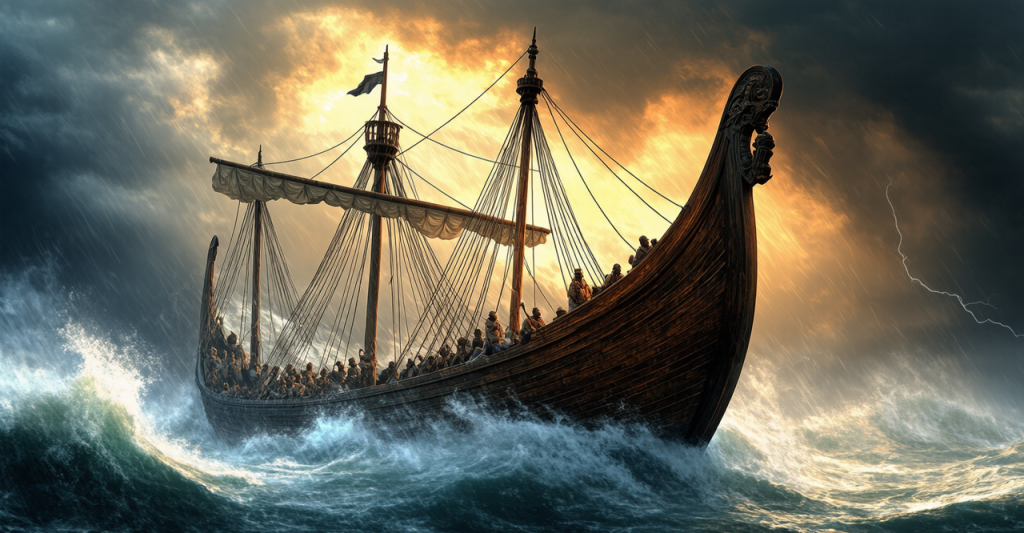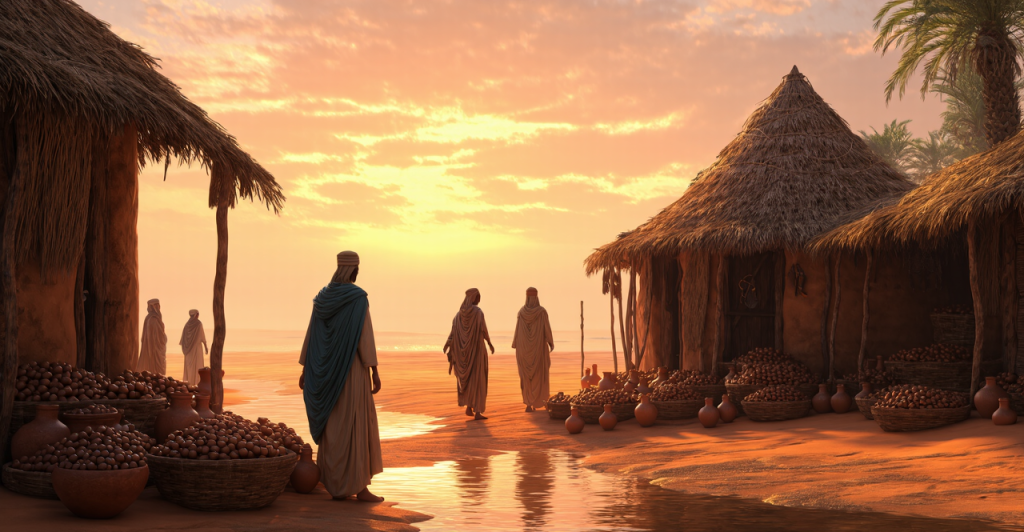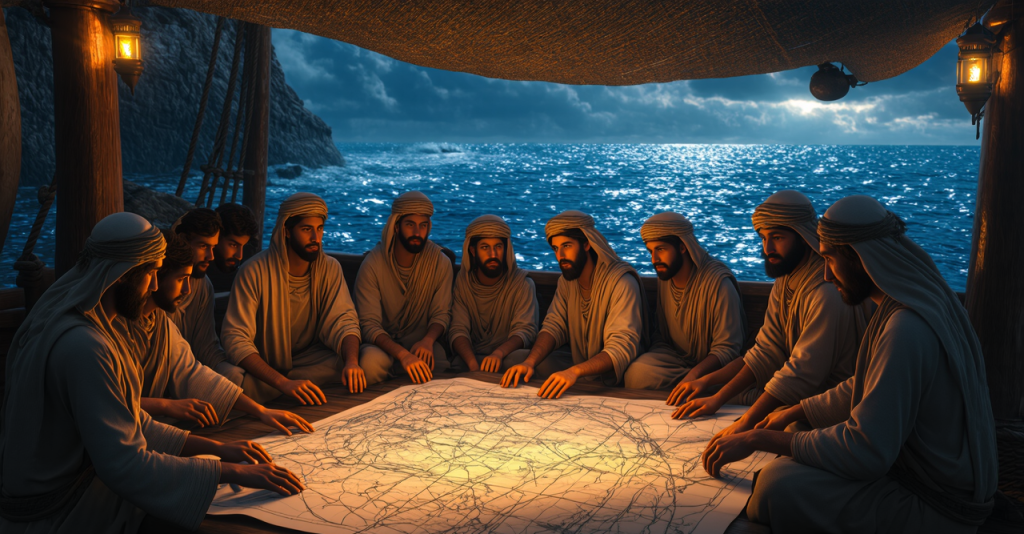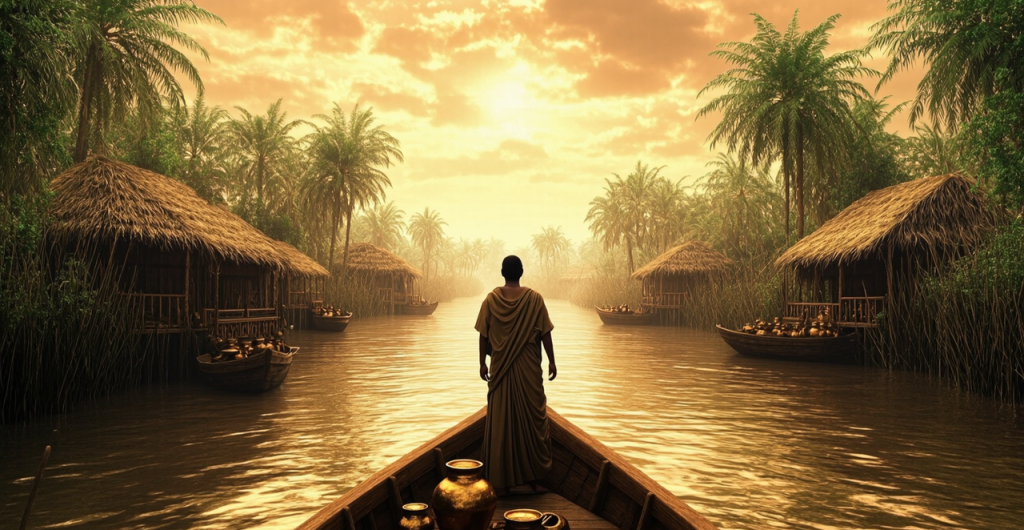
I still recall that dusty afternoon in the university library, when a sunbeam sliced through a stained-glass window and landed on a brittle scroll, whispering secrets of sailors who defied the edges of the known world. It wasn’t a blockbuster tale of empires or legendary heroes—it was the modest account of Phoenician mariners, teenagers and weathered captains alike, who steered their oak-hulled ships into seas that no Mediterranean chart had ever dared to map.
Imagine Tyre and Sidon around 600 BCE. The harbors hummed with activity: purple-dyed cloths hung from wooden racks to dry in the sun, cedar planks glistened with fresh resin, and merchants shouted over the din, eager to barter for gold, ivory, or exotic spices. In the temple courts, priests offered incense to Baal and Astarte, beseeching safe voyages and favorable winds. Beneath those prayers, a handful of restless souls plotted an audacious journey—one that would carry them far beyond familiar waters and into the unknown southern seas.

Their orders came from Egypt’s throne. King Necho II—tall, draped in linen striped the color of desert sunsets—trusted these Phoenician navigators more than his own captains. He challenged them: “Sail south along the African coast, keep the land on your right, and return through the Pillars of Hercules.” No compass. No detailed maps. Just coastal sketches, a few leather-bound logs, and the unwavering belief that beyond the horizon lay new worlds.
Among the crew was Abibaal, barely twelve years old, who clung to the rail as their vessel slid out of Gadir (what we now call Cádiz). His hands trembled at first—salt spray stung his eyes, and every wave looked like a mountain. He scribbled in his waxed tablet: “Today, the sea swallowed the shoreline. Tomorrow, it may swallow us.” But every night, under a canopy of stars, he learned the shape of those constellations, and found comfort in their steady glow.

Storms tested their spirit early on. A gale tore through their fleet like an angry deity, snapping ropes and sending rain in solid sheets. Timber groaned, and water gushed through splintered planks. For days, they bailed and patched, soaked and shivering, until at last the wind died. Somewhere off the coast of modern-day Morocco, they made landfall barefoot on a red-sand beach. They traded salt and copper for fresh water, dates, and goats’ milk. Local tribes stared at their pale skins and foreign tongues; in return, the Phoenicians gained gossip of lush rivers southward—“rivers wide enough to swallow four chariots abreast” one chief claimed.
Each landing brought new sounds and colors. In one village, women wove baskets dyed in cobalt hues, and children darted between huts chanting lilting rhythms. In another, traders showed off beads made from ostrich eggshells, more precious than any Phoenician glass. The captains gathered under palm fronds to debate the next leg: inland for water, or straight on, chasing that southern sun?
They chose the coast, ever mindful of Necho’s decree. Day after day, keeping the shoreline’s curve at arm’s length, they passed river mouths that swelled during seasonal floods, crept around fog-bound capes, and watched vultures wheel overhead. The heat became a living thing—stifling, relentless. Their barrels of water grew warm, and the extra rations they had stuffed into hold began to rot. Scurvy crept in, turning gums to purple marshlands and skin to bruised parchment.
When they rounded the equator—though they had no term for it—something shifted. At high noon, shadows pointed north. The captains realized they were crossing a line no Phoenician had crossed before. They cheered with ragged voices, but the celebration felt hollow beside their thirst and aching limbs.
Months passed. Their oak vessel, strengthened with extra ribs of cedar and sealed with tar, groaned and creaked like an old man. They watched the cradle of Africa’s wildlife unfold: enormous hippos wallowed in muddy rivers, elephants trumpeted across grasslands taller than a man. At night, hyenas howled from the darkness beyond their campfires.

As they pressed on, the coastline peeled away from everything familiar. No longer did they pass pottery fragments stamped with Phoenician seals. Instead, each curve of sand and jutting boulder was a new discovery. They spotted whales breaching the surf, so vast their silhouettes eclipsed the horizon. They heard birdcalls unlike any they knew—squeals and whistles that rose like ghosts over the water.
Then, after what felt like a lifetime at sea, they spied the southern tip. A jagged promontory jutted into waters tinged green by strong currents. Currents that could whisk them eastward, if they dared. I like to think of Captain Hanno—though whispers still debate his name—tracing that shape on a leather map, fingertip trembling, thinking of Necho’s boast and his own pounding heart.
They turned the prow east. The wind shifted, as if blessing their choice. Mild breezes filled the sails, carrying them along a coast fringed with dunes and dark-skinned fishermen in reed boats. Their supplies, scrawny and meager, now welcomed whatever trade goods they could scavenge: dried fish, roasted grains, the roots of strange tubers that made them burp and spit until they grew stronger.
The journey home was a test of will. Their fresh water tasted brackish, but they dared not stop for fear of sinking. Days bled into nights; the sky spun a tapestry of unfamiliar stars. When at last they sighted Gibraltar’s twin pillars, relief welled up like a spring. Some collapsed on deck, limbs too weak to stand. Others laughed and wept, hugging one another in exhaustion and triumph.
Back in Memphis, word of their return spread fast. Merchants abandoned the markets; nobility flocked to the docks. King Necho, reclining on cushions dyed the color of twilight, beckoned the surviving captains forward. With voice hoarse from shouting over storms and waves, they recounted how at midday shadows pointed north, how currents ran east like rivers, how strangers along the coast traded honey and yams for their silver and glass.
Necho’s eyes gleamed. Not just for what they brought—ivory from elephants, ebony darker than night, spices that tingled the tongue—but for proof that the world was wider than anyone had dared imagine. Scholars in Alexandria would pour over these tales for generations, arguing about earth’s shape, ocean’s reach, and human resolve.
In the markets of Tyre, storytellers took up the tale. They spun songs about a boy who learned the sky’s secrets from glowing plankton, of captains who bounced through waves taller than walls, of villages where goats and men shared water troughs beneath singing palm trees. These songs drifted across the Mediterranean, inspiring mariners to peer beyond straits and head for lands stitched to the horizon.
Today, as I hold a recreated Phoenician logbook—careful facsimile inscribed on palm paper—I can almost taste the brine and hear wood whining under stress. I imagine Abibaal, that boy-turned-sailor, running his finger along a map edge, wondering if he might ever see the stars of his homeland again. I think of his final entry: “We set foot on the Pillars of Hercules. Our mission is done. Yet I believe the world keeps running farther than we know.”
And that is the greatest legacy of their voyage around Africa: a spark ignited in human hearts, urging each of us to keep pushing, keep wondering, keep believing there’s more just beyond sight. Without them, would later explorers have risked their lives in caravels and galleons? Would our maps hang so boldly on walls, tracing continents and seas in triumphant lines?
Whenever I trace the curve of Africa on a modern globe, I remember those Phoenician sailors—wave-worn, sun-baked, shivering at dusk—and I raise an imaginary cup in their honor. They sailed on whispers, rumors, and a king’s daring challenge. They crossed unknown waters in ships no sturdier than garden bark. They saw lands that didn’t exist on any scroll and returned to change our understanding of the world.
So here’s to them: mariners who followed the southern sun, who stitched a ribbon of memory across a continent, and who taught us that no boundary is final. Their voyage wasn’t just a coastal survey; it was a testament to human curiosity, stubbornness, and the wild pulse of adventure. And you, reader—when you peer at the map—remember that the horizon is not a limit but a calling. What’s your southern sun? Where will it take you?